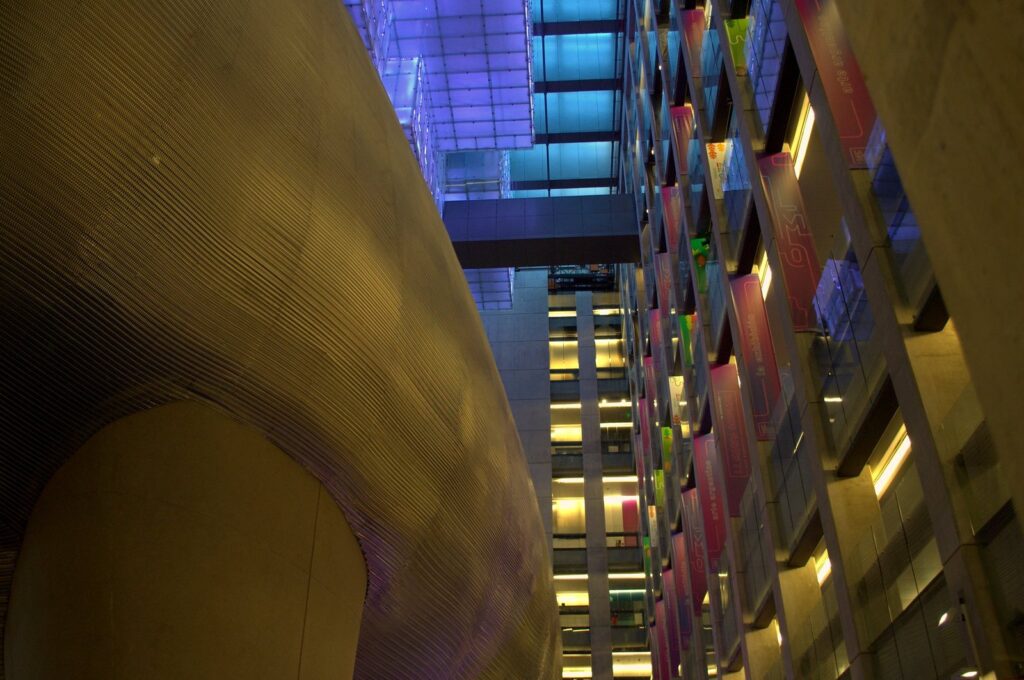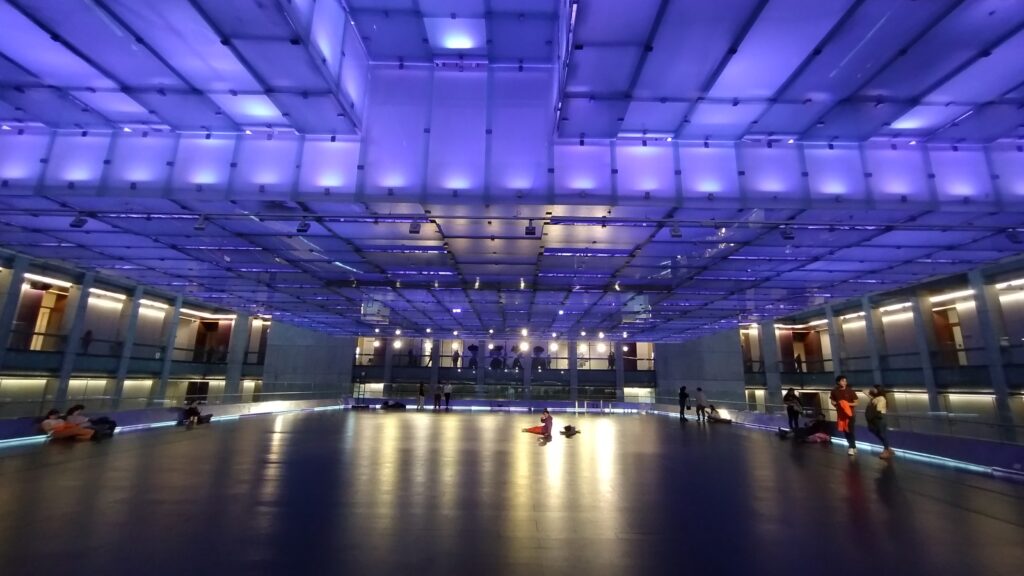How can you miss visiting one of the world’s most acclaimed cultural centers? The Kirchner Cultural Center (CCK) in Buenos Aires, previously home to the Postal and Telecommunications Directorate, now stands as a beacon of art and history.
After a period of uncertainty, the National State transformed this historic building into a modern cultural venue, featuring exhibitions and remarkable architectural wonders.
The CCK beautifully merges its 100-year-old heritage with modern elements, including a stunning concert hall.
Join ExpatPathways as we explore everything you need to know before your visit to the Kirchner Cultural Center in Buenos Aires.
Kirchner Cultural Center (Buenos Aires): Everything You Need to Know Before Your Visit
What is the Kirchner Cultural Center of Buenos Aires?
The Kirchner Cultural Center (CCK) is one of the most important cultural centers in Buenos Aires. Initially, it was the Palace of Post and Telecommunications, inaugurated on September 28, 1928. The idea for the building was conceived in 1888 due to the growing demand for postal and telecommunications services.
The architect, Norbert-Auguste Maillart, based the design on the Central Post Office of New York. Various economic crises and disagreements delayed its completion, but it finally opened as the central administration for Argentina’s postal services.
Modern Transformation
In 1997, the building was declared a national historic monument. As communication methods evolved, many parts of the palace became inactive. Ahead of the Bicentennial of the May Revolution, the government decided to transform the building into a cultural center. This required significant restoration and modernization.
The building was divided into a historic area and an industrial area, with the latter undergoing major transformations to house large music and exhibition halls equipped with state-of-the-art technology.

Inauguration and Features
The CCK, with over 100,000 square meters, ten multi-use rooms, and a capacity of up to 5,000 visitors, was inaugurated on May 21, 2015. It features “La Ballena Azul,” a symphony music hall for 1,750 spectators, a Chamber Music Hall for 540 people, and “La Gran Lámpara,” a 2,000 square meter exhibition space.
The dome, with its faceted glass and LED lighting, offers a unique view of the city and serves as a significant attraction.
Artistic Contributions and Facilities
The CCK includes contributions like the “Esfera azul” by Julio Le Parc, a striking mobile piece made of acrylic plates. The dome area includes a lifting stage, pine benches, stage lights, and a unique cooling system. The cultural center also boasts six auditoriums, each accommodating over 100 spectators, and numerous spaces for video projections, conferences, and exhibitions.
Cultural Areas and Offerings
The Kirchner Cultural Center is divided into various areas that showcase different cultural expressions within the building. These include performing arts, visual arts, cinema, education, literature, music, childhood projects, special projects, and theater.

Where is the Kirchner Cultural Center located?
The Kirchner Cultural Center (CCK) is located in Commune 1 of Buenos Aires, at the border between the neighborhoods of Puerto Madero and San Nicolas. It is surrounded by Avenues Corrientes, Eduardo Madero, and Leandro N. Alem.
The center is close to Plaza de Mayo, the Casa Rosada, and the historic and central areas of Buenos Aires, including the neighborhoods of San Telmo, Retiro, and Puerto Madero.
The CCK is situated in a constantly bustling area. During weekdays, it is a blend of tourist and commercial activity due to the presence of major companies and government entities. On weekends, the area is predominantly filled with tourists, taking advantage of the nearby attractions.
How can I get to the Kirchner Cultural Center?
Subway
Reaching the Kirchner Cultural Center (CCK) is quite straightforward. The most recommended way is via the subway. The B Line has a terminal station on Leandro N. Alem Avenue, just steps away from the CCK. Similarly, the E Line has a station called Correo Central, which is also very close.
Additionally, the A and D Lines have stations near Plaza de Mayo, a short walk from the CCK.
Bus Options
Numerous bus lines run along the main avenues surrounding the CCK: Corrientes, Eduardo Madero, Leandro N. Alem, Rivadavia, and Córdoba. The exclusive bus lanes on 9 de Julio Avenue and Leandro N. Alem Avenue also facilitate quick bus travel.
Private Transportation
While it’s convenient to use taxis or rideshare services like Uber, note that the area can be very congested on weekdays. However, these options are more suitable for weekend visits.
Guided Tours
From Thursday to Sunday, guided tours are available at the CCK, offering insights into the building’s history, architecture, and current functions.
Tour Schedules
- Thursdays, Fridays, and Sundays: 4 PM and 6 PM
- Saturdays: 3 PM, 4 PM, and 6 PM
- Duration: 60 minutes
- Meeting Point: Ground floor, central hall
We recommend that you check at the entrance to the Cultural Center about the schedules, since they do not always correspond to those indicated on their website.

Activities and Things to See at the Kirchner Cultural Center of Buenos Aires
Exhibitions
The CCK hosts a variety of exhibitions across its floors and halls. These exhibitions include historical displays, photography, art, and more.
Some exhibitions are permanent, while others change seasonally. Visitors are welcome to observe, take photos, and film the exhibits.
Architecture
The CCK is a stunning example of majestic architecture. It stands as a living postcard from Buenos Aires’ golden era when European-style buildings were widely constructed.
The building’s historical architecture blends seamlessly with modern renovations, transforming it from an administrative headquarters into a vibrant cultural center.
Guided Tours
Guided tours are an excellent way to explore the CCK in detail. While self-guided tours are also possible, they may not always provide access to all levels and exhibitions. Guided tours, however, offer comprehensive insight into the history and significance of the CCK.
Through the Public Observatory and Guided Tours, activities for all ages are conducted to explore the building’s history and its current status as Latin America’s largest cultural center. These include tours with sign language interpretation, nighttime tours, thematic tours, and other special activities.
Auditorium
The CCK’s main concert hall, known as “La Ballena Azul,” is a marvel for both musicians and architecture enthusiasts. Located in the heart of the CCK, this oval-shaped hall boasts exceptional acoustics and impressive supporting columns.
Designed in Germany and inaugurated in 2015, it hosts various music concerts. Check the programming schedule or join a guided tour to explore this magnificent space.
Night Tours
Night tours at the CCK provide a unique experience, taking place on the ninth floor. These tours grant access to two of the most spectacular areas: the observatories and the dome.
The observatories offer a different perspective of Buenos Aires, along with historical and architectural insights about the building. The dome, admired by visitors, features large windows that offer stunning views of the river, sky, and city, enhancing cultural events held there.
Last Considerations
Are you going to miss the experience of visiting and exploring one of the most important cultural centers in the world? The Kirchner Cultural Center (Buenos Aires) offers a unique blend of modern and classic elements that you won’t find anywhere else in the city.
From the moment you step through the grand entrance, the historic palace and its awe-inspiring architecture will captivate you. Whether you’re a digital nomad, a traveler, or an expat, the CCK is a must-visit destination that showcases the best of Buenos Aires’ cultural and architectural heritage.
Discover more about this remarkable place with ExpatPathways and make sure it’s on your itinerary.


